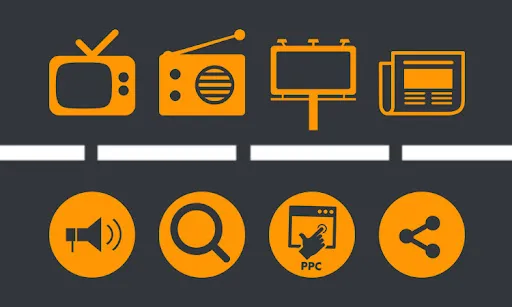To understand the concept of ATL, BTL and TTL in advertising , we must first know their meaning. In fact, ATL stands for Above The Line, BTL stands for Below The Line, and TTL stands for Through The Line.
As soon as you enter into a conversation and meeting with an advertising agency , one of the first sets of terms you will hear is ATL, BTL, and TTL.
You may hear your opponent say: We are strong in both ATL and BTL ads, but our competitor only works ATL ads. You may also hear a company explain that BTL advertising is a specialized job and only we know how to do it, and if someone tells you that both BTL and ATL work, it is obvious that they do not know both!
There is no question that ATL, BTL and TTL all speak of the same line, but the question is where exactly is this line?

History of ATL, BTL and TTL in advertising
Let me tell you some historical stories. There are different stories about the formation of this famous line. One of the narratives is that a significant part of advertising companies’ income in the distant past of the fifties and sixties was in the form of fees they received from mass media such as television, radio, etc. for selling their advertising space. In other words, if there were billboards, radio, television, and newspapers in an advertising campaign , it would be profitable for them, and if a part of the advertising campaign included sampling, brochures, and catalogs, they would not get any serious profit. It took most of their time.
Accountants of advertising companies write accounts related to profitable media above the line in their documents, and accounts related to useless and unprofitable ads below the line, and thus mass media as ATL and limited advertising tools with a specific audience. They were known as BTL.
Of course, this is one of the narrations. Another story was that there was a line in financial documents that separated figures related to long-term investment from current expenses. As a rule, the companies that implemented large advertising campaigns for their products believed that extensive media advertising is a type of branding and long-term investment that will pay off in the long term, and in the short term, doing those things may not be economically justified. Instead, point-of-sale ads in supermarkets, cinemas, or any other store would convert into sales at a faster rate, and they could consider it as a current cost of sales.
Therefore, maybe the same line meant the separation of long-term investments and short-term expenses.
Anyway, with the advancement of science and the formation of any industry, the tradition is that they return to the past and history of that industry and create more scientific and more people-friendly and dignified narratives. For this reason, now one of the ways of describing this historical line is as follows:
Our desired line divides advertising into two areas: public awareness and creating interest, as well as creating serious desire and inviting to buy.
If we want to promote a company’s breakfast chocolate product, television and billboards and mass media create public awareness. When you see a banner advertising breakfast chocolate at the supermarket or come across a free sample that is given to you to taste, it is practically a serious invitation to buy.
Nowadays, advertising in general media with a large audience is called ATL advertising, and advertising in limited media for specific target groups and advertising at the point of sale of products and services is called BTL advertising.
It can be assumed that the criteria for measuring the effectiveness of these two types of media, as well as how to design the advertising message for them, are completely different. In ATL advertising, things such as the number of audiences and media credibility are taken into consideration, and in BTL advertising, more attention is paid to the behavioral characteristics of the audience and their decision-making patterns , etc.
In the meantime, advertising agencies that pay attention to both types of media generally use the term TTL, emphasizing that we are in-line and not biased toward either line. Like the moderation line when everyone is divided into left and right groups in a society!
In the official advertising literature, sometimes the first category is called Mass Advertising and the second category is called Customized Advertising or customized advertising for a specific group. Of course, like many other fields that have changed with the advent of technology, in the field of advertising, the border between two types of media cannot be defined as much as before.
We are now faced with a phenomenon called Mass Customization. It means that, for example, while a news site has millions of visitors, it is possible to spread different forms of an advertising banner for them based on their taste or their location. Or even a home appliance store, based on the consumer’s income level, which can be inferred from his internet behavior, may choose certain products and show them to him. The work that can be seen in its simplest and clearest form in Google ads .
The use of advertisements in mobile phones and wearable digital devices such as smart watches has made it possible to carry out large-scale advertisements in accordance with the audience’s taste.
However, it is unlikely that the terms BTL and ATL will disappear from the advertising literature anytime soon. Because based on this division, many advertising patterns and message design, and how to spend and calculate return on investment, etc. will change. Therefore, it is better that you and I know their meaning in the meetings and apply them, and maybe we smile a little by reviewing the history of their formation in our minds!













4 Comments. Leave new
The design look great
Thank you
gave me the mental break I desperately needed.
Thank you